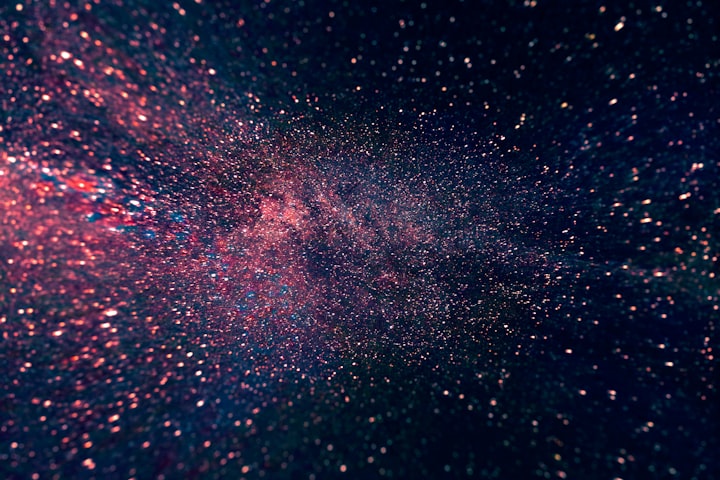Searching for Quark Stars in the Vast Universe
Quarks inside quark stars are free moving and slightly smaller than neutron stars, so they are hard to find

In physics, it is often the case that theories precede discoveries; in 1916, Einstein proposed the concept of "gravitational waves" and it was not until 100 years later that gravitational waves were detected by humans. Some concepts are not as fortunate as gravitational waves and are still only theories, and quark stars are one of them.
In the 1960s, scientists proposed the concept of "quark stars", but so far, no one has been able to confirm the existence of quark stars in the vastness of the universe. But scientists have not given up and have been trying to find it in the vast universe.
To find a quark star, we must first understand what a quark star is.
What is a quark star?
Things start with stellar evolution. Stars have been burning their fuel for their entire lives, but the fuel will run out one day. When a star runs out of fuel, it begins to cool and shrink. How far the star will eventually shrink depends on the mass of the star, and in physics, the mass of the Sun is generally used as a measure of the mass of other stars.
If the final mass of a star after burning is less than 1.4 solar masses, then it will eventually stop contracting and become a white dwarf. One of the brightest stars we see at night, Sirius, has a white dwarf in its vicinity, and it was the first white dwarf discovered by scientists. Why do white dwarfs eventually stop collapsing? The reason is that according to the bubbly incompatibility principle, the electrons inside the white dwarf repel each other and fight against the gravitational force that causes the collapse, making it stop collapsing.
When a star of 4 to 8 solar masses burns out and only a planet of about 1.4 to 2 times the mass of the Sun remains, another stellar end state, a neutron star, is formed. The radius of a neutron star is only about 10 km, while the radius of the Sun is 695,500 km, so you can imagine that the density of neutron stars is very high. A tablespoon of neutron star matter weighs 1 billion tons on Earth. The reason neutron stars do not continue to collapse is that the repulsion between the neutrons inside them resists the gravitational force that causes the collapse. Successful observations of neutron stars have not gone so well either. The existence of neutron stars was predicted by scientists before World War II, and it was only 30 years later that it was first detected.
Are there bigger stars in the universe? The answer is yes. Supermassive stars will eventually collapse into black holes.
So, what do quark stars look like? Scientists speculate that quark stars have an outer shell, most likely made of neutron matter, with no core and that quarks inside quark stars move freely, unlike neutron stars where quarks are bound together to form neutrons. In terms of size, quark stars may be slightly smaller than neutron stars. However, so far, no quark star has been discovered by humans.

Why are quark stars so rare?
The search for quark stars is difficult The conditions for forming quark stars are demanding, requiring the mass of the star to be within a certain range (although this range has not yet been determined), and neither forming neutron stars nor collapsing into black holes. Quark stars may be unstable. It is likely that single quarks do not exist and must "clump" together to form other particles such as neutrons and protons, so quark stars may not be stable for long. During the collapse of a star, a quark star may have appeared, but because it is unstable and cannot be maintained for a long time, it may have gone on to collapse into a black hole before we have time to detect it.
In addition, the "appearance" of a quark star is one of the obstacles to finding it. On the surface, quark stars are almost indistinguishable from neutron stars, and both are equally luminous, hot, and dense. Some scientists estimate that there are nearly 1 billion neutron stars in the Milky Way, and there may be a quark star among them.
The current lack of understanding of the physical properties of quark matter is also a major obstacle. In addition, it is almost impossible to simulate the process of quark star formation in the laboratory, and the conditions required for quark star formation cannot be met on Earth. The temperature and density required for quark star formation are a billion times higher than what is currently available in the laboratory. Scientists have taken another route and tried to create quark matter with particle colliders. The biggest achievement so far is the successful creation of extremely hot quark-gluon plasma, but the quark-gluon plasma appears only at the moment of collision, perhaps a few microseconds, and then rapidly cools and transforms into other matter particles. Despite the difficulties, it is not easy to give up.
A long road to find stars
The search for quark stars relies heavily on the knowledge of neutron stars. Although the two are very similar in appearance, there are always some differences. Scientists believe that quark stars should rotate differently from neutron stars. In addition, quark stars should be denser than neutron stars. During stellar evolution, some stars at the end of their evolution will explode with a bang, emitting light so bright that it can illuminate the entire galaxy in which it is located, an explosion called a supernova explosion. Sometimes, supernova explosions can form neutron stars or black holes. If a supernova explosion forms a quark star, it should be about 100 times brighter than a normal supernova explosion. Based on these properties, it may be possible to find hidden quark stars.
Of course, the knowledge of quark stars is very important for finding quark stars. Some scientists are studying the changes of matter at very high densities to understand the nature of matter in dense stars such as quark stars; some scientists use the Large Hadrian Collider to understand the nature of neutron stars to further determine the nature of quark stars.
In June 2017, NASA launched the "Neutron Star Interior Composition Explorer" to the International Space Station to study neutron stars. With this probe, scientists can study the spectra of neutron stars and determine their mass-to-radius ratios. Further understanding of neutron stars may point the way to the search for quark stars.
Another detection program, to be launched in 2025, is China's Enhanced X-ray Time Variation and Polarization Observatory, a space observatory dedicated to observing electromagnetic waves in the X-ray band. With the help of this observatory, scientists will be able to detect the time-varying X-ray radiation of neutron stars, black holes, and perhaps quark stars, and probe the fundamental physical laws of celestial bodies under conditions of strong gravitational fields, strong magnetic fields, and high densities. This program will be devoted to the observation of black holes, neutron stars, and quark stars.
Can humans find quark stars? Not sure. If it exists, we should be able to find it. But patience is needed, gravitational waves have gone through a whole century from the time they were proposed to the time they were successfully detected, so wait, maybe in the next century, quark stars will no longer be just a concept in theory.
About the Creator
Sue Torres
Is there any other reason to live to change the world?






Comments
There are no comments for this story
Be the first to respond and start the conversation.